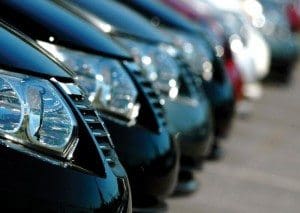For small and medium-sized enterprises (SMEs), company vehicles are so much more than just a means of transport. They are also essential tools that impact logistics, productivity, branding, and operating costs.
But with rapid changes in regulations, technology, and environmental expectations, the question many businesses now face is: is your fleet futureproof?
Whether you operate a few vans or a mixed fleet of company cars, reviewing the health and direction of your vehicles today can prevent costly issues tomorrow. Here’s what every SME should be evaluating to ensure their fleet is ready for the future.
Vehicle Compliance and Roadworthiness
Keeping your fleet compliant is a legal requirement, making it a cornerstone of safety and operational efficiency. All business vehicles must undergo regular checks, especially when clocking high mileage.
One of the simplest and most essential steps SMEs can take is ensuring every vehicle has a valid MOT. Scheduling regular tests ensures each car or van meets road safety and emissions standards, helping you avoid fines, downtime, and reputational damage.
Review now:
Are all vehicles booked for their MOTs well in advance?
Are service schedules clearly documented and followed?
Transitioning to Low-Emission Vehicles
With growing pressure to reduce carbon footprints and the introduction of clean air zones (CAZs) in UK cities, SMEs must consider the environmental impact of their fleets. Many funding bodies, clients, and government initiatives now favour low-emission transport.
Key considerations:
Should you begin phasing in electric or hybrid vehicles?
Will your current fleet be subject to CAZ charges in the near future?
Are you eligible for grants to upgrade older vehicles?
Starting with a cost-benefit analysis today can give you time to adapt before regulations tighten further.
Operating Costs and Fuel Efficiency
Fuel is one of the largest ongoing costs for any fleet. But in addition to rising prices, inefficient vehicles can result in unnecessary wear and increased emissions.
Steps to take:
Review mpg data across your fleet
Identify underperforming vehicles or high-cost routes
Explore tyre optimisation—fitting fuel-efficient tyres can cut consumption and reduce downtime
Regular maintenance, including tyre checks, oil changes, and alignment adjustments, can significantly improve efficiency.
Driver Safety and Duty of Care
Fleet futureproofing involves looking after your drivers. SMEs have a legal duty of care to ensure staff are operating safe, roadworthy vehicles. This responsibility doesn’t stop at handing over the keys.
Implement:
A driver handbook outlining vehicle checks and safety practices
Regular training sessions or briefings
Incident tracking to highlight problem areas or training needs
With many fleets now tracked by telematics, you can also use data to improve driving behaviour and reduce risk.
Digital Tools and Fleet Monitoring
Fleet management is moving beyond spreadsheets. Today’s digital tools offer real-time tracking, fuel usage reports, and automated maintenance scheduling, all designed to increase transparency and reduce admin.
Evaluate:
Could software help you manage MOT schedules, fuel data, or servicing?
Are you getting full use out of your current telematics systems?
Is your fleet data centralised and easily accessible?
By integrating digital solutions now, you’ll be better equipped to scale and adapt your fleet strategy.
Resilience and Replacement Strategy
Finally, SMEs should look at futureproofing from a long-term resilience perspective. Delays in vehicle supply, rising second-hand prices, and servicing bottlenecks mean you need a clear plan for replacements and contingency.
Ask yourself:
Do you have a rolling replacement cycle or are decisions reactive?
Are lead times from manufacturers or dealers increasing?
Do you have backup vehicles or leasing arrangements in place for emergencies?
Fleet resilience means preparing for the unexpected, and staying agile in the face of change.
Wrapping Up
Futureproofing your SME fleet isn’t a one-time task. It’s an ongoing commitment to compliance, efficiency, sustainability, and safety. From staying on top of your MOT responsibilities to exploring cleaner alternatives and smarter tracking tools, small adjustments now can lead to major long-term gains.
By reviewing these areas today, your fleet can become not just a business asset, but a strategic advantage in a fast-changing world
